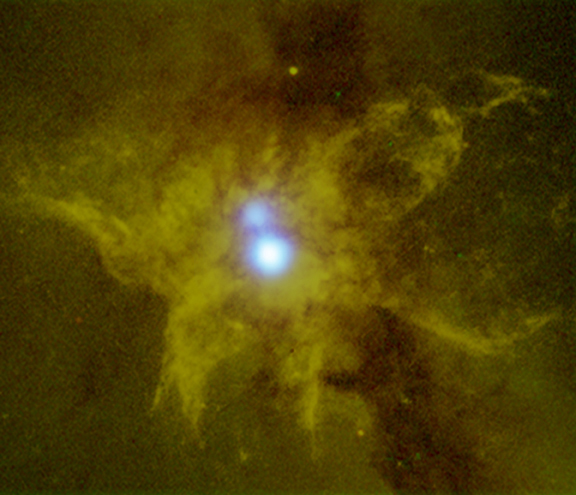
 Credit: NASA/CXC/MPE/S.Komossa et al.
Credit: NASA/CXC/MPE/S.Komossa et al.
Two Black Hearts
Two galaxies passing in the night collide. What happens? The mutual
gravitational interaction between the two galaxies may cause bursts of new
stars. But galaxies often contain supermassive black holes in their centers. A
merger of galaxies might mean a merger of black holes, and may be one way nature
builds supermassive black holes, by combining smaller black holes together. A
new observation of the galaxy NGC 6240 has perhaps revealed this mechanism in
motion. NGC 6240 is a the remnant of a merger of 2 smaller galaxies. Now an
observation with the Chandra X-ray
Observatory of the center of this galaxy has revealed the
presence of 2 X-ray sources which astronomers have identified as
supermassive black holes. The image above shows the 2 black holes as two X-ray sources superimposed on an optical image of the galaxy. The black holes appear as blue sources, indicating that these two objects are bright sources of high energy X-rays. These two black holes are about 3000 lightyears apart
from each other. Over the course of the next few hundred million years, these
black holes should drift together, eventually spiralling into each other to
combine in a titanic explosion of gamma rays and, even more strangely, gravity waves.
Last Week *
HEA Dictionary * Archive
* Search HEAPOW
* Education
Each week the HEASARC
brings you new, exciting and beautiful images from X-ray and Gamma ray
astronomy. Check back each week and be sure to check out the HEAPOW archive!
Page Author: Dr. Michael F. Corcoran
Last modified November 25, 2002


